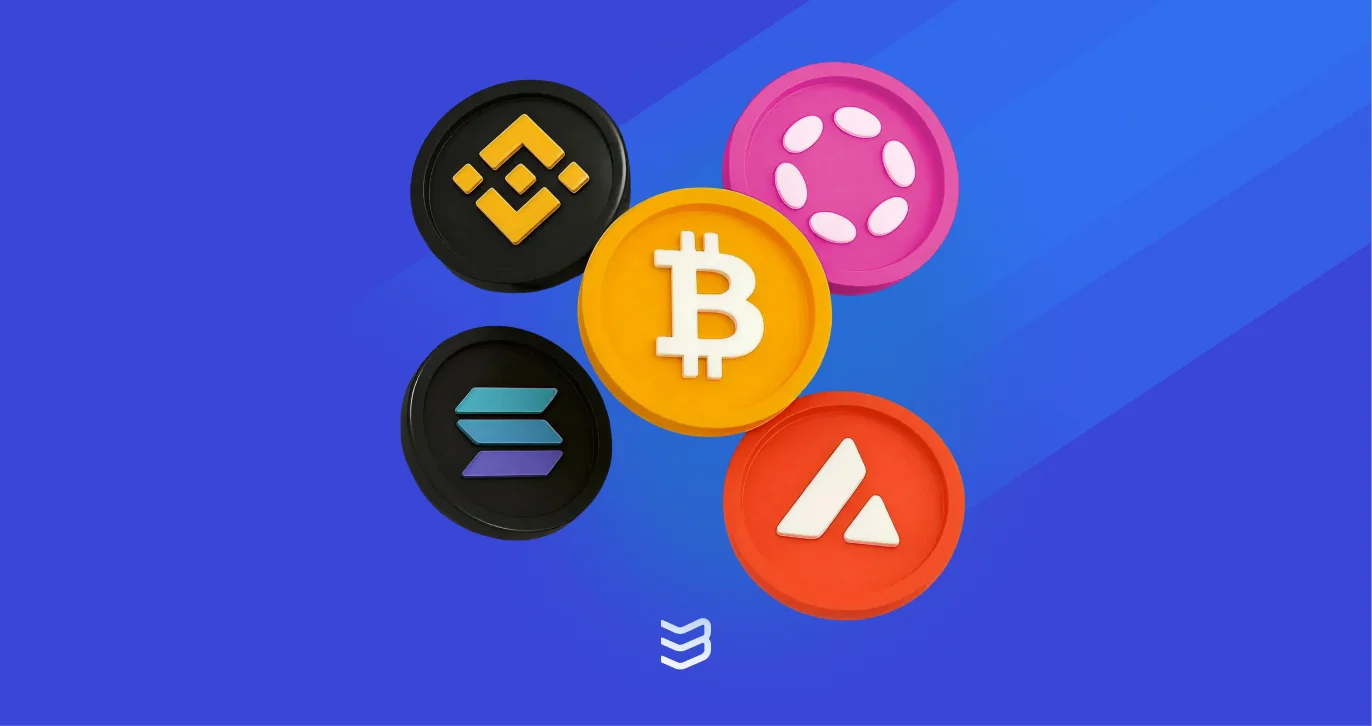tl;dr
- DEXs enable peer-to-peer crypto trading without intermediaries using smart contracts.
- Early DEXs like EtherDelta and IDEX (2016-2017) had poor UI, low liquidity, and high costs.
- DEXs provide non-custodial trading, allowing users to retain control of their funds.
- To trade on a DEX, connect a wallet, select a blockchain, choose a token pair, and confirm the swap.
A Brief Introduction to DEXs
DEXs enable direct peer-to-peer crypto transactions without intermediaries. Unlike centralized exchanges (CEXs), which rely on third parties to facilitate trades, DEXs operate on blockchain technology using smart contracts for automated and trustless transactions.
The first generation of DEXs, IDEX and EtherDelta, launched in 2016-2017 on Ethereum and were difficult to navigate and trade on, even for crypto-savvy users.
What are DEXs?
Defining Decentralized Exchanges
DEXs are blockchain-based platforms that enable peer-to-peer cryptocurrency trading without relying on intermediaries. DEXs operate autonomously using smart contracts. These self-executing contracts enforce trade conditions and ensure transactions are processed transparently on the blockchain. By eliminating centralized control, DEXs provide users with greater security and financial sovereignty, reducing risks associated with hacks, censorship, and custodial failures.
Key Characteristics of DEXs
Non-Custodial Trading
DEXs allow users to retain full control of their funds at all times. Instead of depositing assets into an exchange wallet, trades occur directly from personal wallets, reducing the risk of exchange hacks and mismanagement.
Permissionless Access and Censorship Resistance
Anyone with an internet connection and a crypto wallet can trade on a DEX without needing to create an account or undergo identity verification. This permissionless nature ensures global accessibility and protects users from restrictions imposed by centralized authorities.
Transparency and On-Chain Transactions
All trades on a DEX are recorded on the blockchain, making transactions verifiable and tamper-proof. Users can audit trades and liquidity movements in real time, ensuring fair and transparent market conditions.
The Origins of the Modern DEX
Using a blockchain for something more complicated than a standard peer-to-peer transaction isn’t exactly a new concept. Satoshi Nakamoto, Bitcoin’s creator, left traces of code for a poker game in Bitcoin’s codebase in Bitcoin’s 0.1.0 release.
Early Concepts and Precursors
The proliferation of tokens in Ethereum’s ecosystem in its early days sparked the first DEXs in 2016. These early DEXs, which include EtherDelta, and later IDEX, and Fork Delta, were cumbersome and slow orderbooks.
The first wave of DEXs struggled with multiple issues, including high transaction costs along with low liquidity and trading volumes. These issues were made worse with a horrible and unfriendly UI, which made using these platforms a real struggle.
Fortunately, these early concepts led to the rise of AMM DEXs.
The Emergence of Automated Market Makers (AMMs)
The concept of AMMs was first introduced by Bancor in 2017, providing an alternative to the traditional order book model. However, it wasn’t until Uniswap launched in 2018 that AMMs gained widespread adoption. By replacing order books with liquidity pools, Bancor and Uniswap eliminated the inefficiencies that plagued early DEXs, making trading faster, cheaper, and more accessible.
The Impact of Uniswap and the AMM Model
Uniswap’s model significantly improved liquidity in DeFi, as users could earn fees by supplying assets to liquidity pools. This incentivized participation and created a more sustainable trading environment. The AMM approach also lowered entry barriers, allowing anyone to swap tokens or provide liquidity without intermediaries.
Uniswap’s success paved the way for other AMM-based DEXs, such as SushiSwap, Curve, and Balancer, each introducing its own spin on the concept.
How Do Decentralized Exchanges Work?
While most popular modern DEXs are of the AMM variety, they tend to differ slightly in the way they work.
Automated Market Makers (AMMs) Explained
Instead of relying on buyers and sellers to match orders, AMMs use liquidity pools, which are smart contract-based reserves of token pairs provided by users. The users are incentivized to provide liquidity in exchange for a portion of trading fees generated by the pool.
These pools enable instant trades using an algorithmic pricing model, typically the constant product formula (x * y = k). This method ensures that trades are executed automatically based on supply and demand, without requiring direct counterparty matching.
Order Book DEXs vs. AMM DEXs
The traditional order book model, used by CEXs and early DEXs, relies on buyers and sellers placing bids and asks. A trade occurs when prices match, requiring active market participation and sufficient liquidity. While this model offers precise pricing and better efficiency in high-liquidity markets, early order book DEXs suffered from slow transactions, high gas fees, and limited liquidity.
AMM-based DEXs, like Uniswap, eliminate order books by using liquidity pools and algorithmic pricing. This model enables instant trades without counterparties, making it more accessible and efficient in low-liquidity environments. However, AMMs can suffer from price slippage, impermanent loss for liquidity providers, and inefficient capital use.
While order book DEXs offer better price discovery and efficiency for large trades, AMMs provide greater accessibility, ease of use, and permissionless liquidity provision. Both models continue to evolve, shaping the future of trading.
Smart Contracts and On-Chain Transactions
Smart contracts automate trade execution on DEXs by enforcing predefined rules without intermediaries. When a trade meets the conditions, the smart contract executes it automatically.
Blockchain networks verify transactions by validating them through consensus mechanisms, ensuring transparency and security. However, executing these transactions requires gas fees, which are payments made to compensate network validators for processing and securing trades. Gas costs tend to vary based on network congestion and transaction complexity.
Liquidity Pools and Yield Farming
Liquidity pools are essential for DEXs, enabling seamless token swaps without order books. Users provide assets to these pools, earning fees from trades. Yield farming allows liquidity providers to earn additional rewards by staking LP tokens in reward programs. While it offers high returns, risks include impermanent loss and smart contract vulnerabilities.
Platforms like TokensFarm simplify yield farming and offer diverse opportunities for liquidity providers to maximize their rewards.
Benefits and Risks of Using Decentralized Exchanges
DEXs offer a trustless and transparent way to trade cryptocurrencies without intermediaries. While they provide numerous advantages, they also come with certain risks that users should consider.
Benefits of Using DEXs
DEXs enable non-custodial trading, meaning users retain full control over their assets, reducing the risk of exchange hacks. They offer permissionless access, allowing anyone to trade without requiring approval or extensive personal details. Additionally, DEXs enhance transparency as all transactions occur on-chain, providing verifiable records.
Risks of Using DEXs
Despite their advantages, DEXs have limitations, including lower liquidity compared to centralized exchanges, which could lead to higher slippage. Users must also manage their own private keys, increasing the risk of loss due to human error. Smart contract vulnerabilities pose another concern, as bugs and exploits can lead to asset losses, especially for liquidity providers. Additionally, high gas fees on some networks can make trading expensive during periods of congestion.

How to Trade on DEXs
Trading on a DEX is a straightforward process that allows users to swap tokens easily. First, navigate to the DEX of your choice, such as Uniswap, SushiSwap, or PancakeSwap. Next, connect your wallet using WalletConnect, MetaMask, or another compatible option.

Once connected, select the blockchain network you wish to trade on, ensuring it supports the tokens you want to swap. Then, choose your desired token pair (e.g., ETH/LINK) and enter the amount you wish to trade. Carefully review the trade details, including the estimated price and transaction fees. Finally, approve the transaction in your wallet and confirm the swap. After the transaction is validated on the blockchain, your new tokens will appear in your wallet.


.webp)



